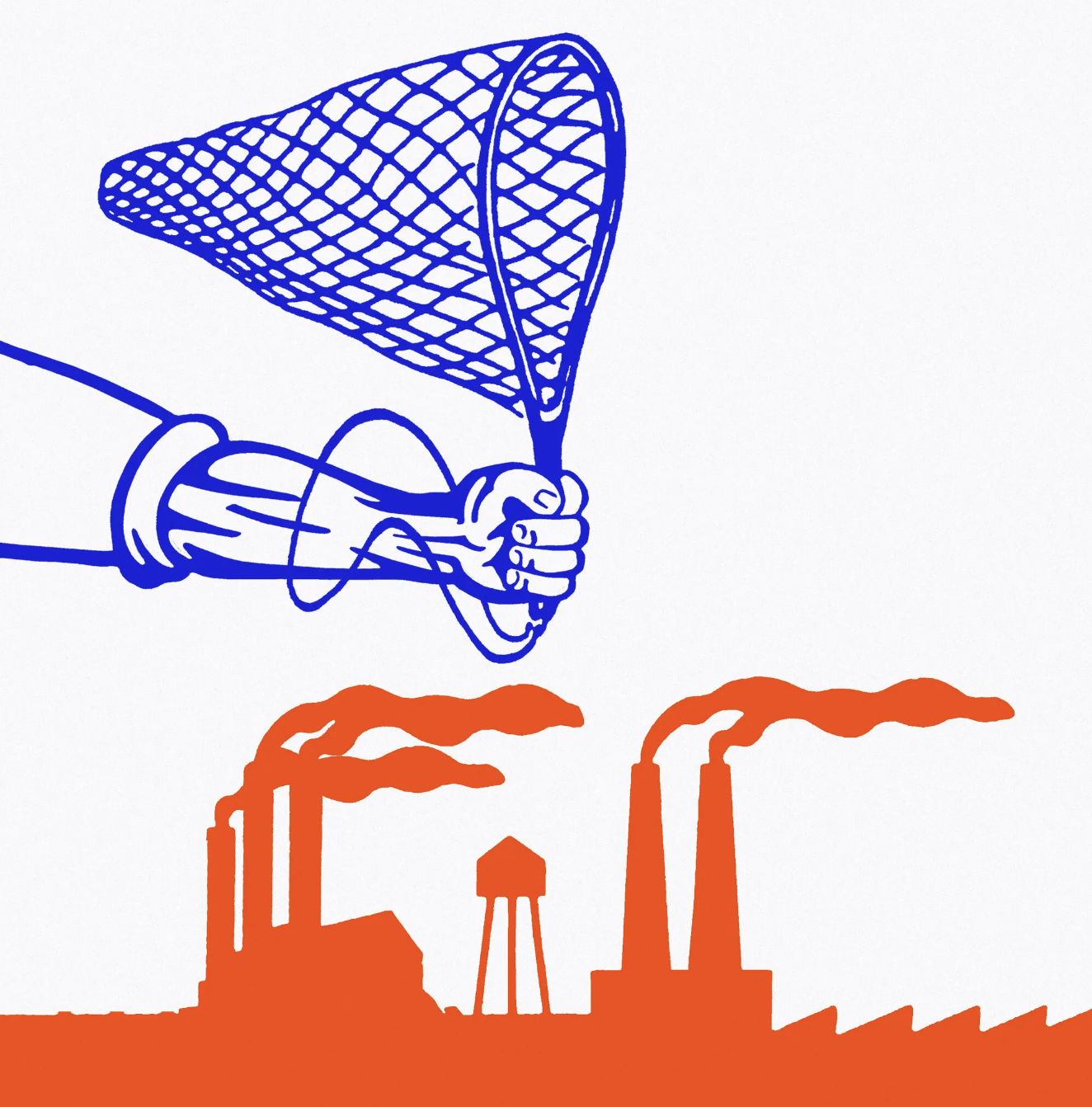Originally published by Peter Coy for The New York Times on December 8, 2023
Illustration by The New York Times
Fighting climate change by sucking carbon dioxide out of the air with giant blowers seems like a brilliant idea. Why knock yourself out trying to eliminate carbon dioxide emissions when you can continue to produce the emissions and then snatch them back from the atmosphere? That solution reminds me of the little red vehicle with robotic arms that the Cat in the Hat uses to clean up the house that he, Thing One and Thing Two have just trashed. “Have no fear of this mess,” the Cat in the Hat tells the children. “I always pick up all my playthings.”
But direct air capture of carbon, as the nascent technology is called, is not as reliable as Dr. Seuss’s three-wheeled deus ex machina. And it’s coming in for heavy criticism at COP28, the United Nations climate summit that’s happening in the desert city of Dubai, United Arab Emirates. “It’s incredibly dangerous for the fossil fuel industry and its enablers in government to promote the idea that they can keep burning fossil fuels while pulling carbon out of the air or out of the smokestacks with technologies that consistently fail to deliver,” Collin Rees, the U.S. program manager at Oil Change International, wrote in an email.
Direct air capture of carbon isn’t a completely bad idea. In fact, it’s going to have to be part of the solution to climate change eventually. That’s because in some sectors of the economy, it’s impossible or extremely costly to reduce greenhouse gas emissions all the way to zero. Jet aviation and cement production are two examples that people sometimes mention (although technological breakthroughs may change that). In such sectors, it’s more cost-effective to get to net zero by allowing a little carbon to dribble out and then cleaning it up through direct air capture.
To continue reading the article, click here. This is a NYT subscriber only article.
